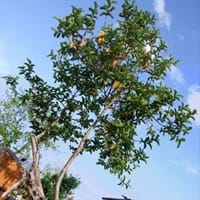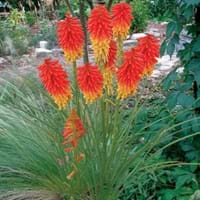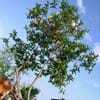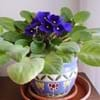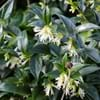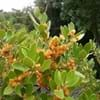Life Span
Perennial
Perennial
Type
Broadleaf Evergreen
Perennial
Origin
Central America, South America
Hybrid origin
Types
Tropical White , Tropical Pink , Mexican Cream (Tropical Yellow) , Red Malaysian ,Lemon Guava
Not Available
Number of Varieties
Not Available
Habitat
Subtropical climates, subtropical regions
Damp Places, Marshy ground
USDA Hardiness Zone
10-11
6-9
AHS Heat Zone
Not Available
9-4
Sunset Zone
21,22
2a, 2b, 3a, 3b, 4, 5, 6, 7, 8, 9, 14, 15, 16, 17, 18, 19, 20, 21, 22, 23, 24
Habit
Narrow Upright/Fastigiate
Clump-Forming
Flower Color
White
Yellow, Red, Orange, Pink
Flower Color Modifier
Bicolor
Bicolor
Fruit Color
Yellow, Pink
Not Available
Leaf Color in Spring
Olive, Dark Green
Green, Blue Green
Leaf Color in Summer
Olive, Dark Green
Green, Blue Green
Leaf Color in Fall
Olive, Dark Green
Blue Green, Gray Green, Light Yellow
Leaf Color in Winter
Olive, Dark Green
Light Green
Leaf Shape
Oval to egg shaped
Linear
Plant Season
Spring, Summer, Fall, Winter
Spring, Summer
Sunlight
Partial Sun
Full Sun, Partial Sun
Type of Soil
Loam
Clay, Loam, Sand
The pH of Soil
Neutral
Acidic, Neutral
Soil Drainage
Average
Well drained
Bloom Time
Spring
Early Summer, Summer
Tolerances
Drought
Drought
Where to Plant?
Ground
Container, Ground
How to Plant?
Cuttings, Grafting, Seedlings
Divison, Seedlings
Plant Maintenance
Medium
Medium
Watering Requirements
Requires regular watering, Use and maintain water-efficient soaker hoses
Needs more water during establishment, Water Deeply, Water in morning to avoid prompting diseases, Water in the early morning hours
In Summer
Lots of watering
Lots of watering
In Spring
Moderate
Moderate
In Winter
Average Water
Average Water
Soil pH
Neutral
Acidic, Neutral
Soil Type
Loam
Clay, Loam, Sand
Soil Drainage Capacity
Average
Well drained
Sun Exposure
Partial Sun
Full Sun, Partial Sun
Pruning
cut main trunk every 5 years, Remove damaged leaves, Remove dead branches, Remove dead leaves
Cut or pinch the stems, Remove damaged leaves, Remove dead branches, Remove dead leaves
Fertilizers
All-Purpose Liquid Fertilizer, herbicides
All-Purpose Liquid Fertilizer, Apply N-P-K
Pests and Diseases
Mealybugs, Red blotch, Scale, Whiteflies
Onion thrips, Red blotch, Root rot
Plant Tolerance
Drought, saturated soil
Drought, Moisture
Flower Petal Number
Single
Single
Foliage Texture
Medium
Coarse
Foliage Sheen
Matte
Matte
Attracts
Birds, pollinators
Snails
Allergy
Constipation
Not Available
Aesthetic Uses
Not Available
Borders, Cottage Garden, Ground Cover
Beauty Benefits
Acne, allergy clogging, Anti-ageing, Blackheads, Good for skin and hair, Not Available
Not Available
Environmental Uses
Air purification, Food for animals, Food for birds, Nesting sites for birds
Air purification
Medicinal Uses
anti hemorrhagic, Antibiotic, Digestive
Not Available
Part of Plant Used
Fruits, Whole plant
Not Available
Other Uses
Added to salads, Can be boiled and seasoned, pickled, Sauces
Not Available
Used As Indoor Plant
No
No
Used As Outdoor Plant
Yes
Yes
Garden Design
Container, Edible, Fruit, Fruit Tree, Shade Trees
Container, Cutflower, Mixed Border, Rock Garden, Wall
Botanical Name
PSIDIUM guajava 'Thai White'
KNIPHOFIA 'Border Ballet'
Common Name
common guava, yellow guava, lemon guava
Tritoma, Wisley Blue Spring Starflower, Wisley Blue Springstar
In German
Echte Guave
Tritoma
In French
Goyavier
Tritoma
In Spanish
guayaba
tritoma
In Greek
Goiabeira
tritoma
In Portuguese
Goiabeira
Tritoma
In Polish
Gujawa pospolita
Tritoma
In Latin
Goiabeira
Trytoma
Phylum
Magnoliophyta
Tracheophyta
Class
Magnoliopsida
Magnoliopsida
Order
Myrtales
Asparagales
Family
Myrtaceae
Liliaceae
Genus
Psidium guajava
Kniphofia
Clade
Angiosperms, Eudicots, Rosids
Angiosperms, Monocots
Tribe
Myrteae
Not Available
Subfamily
Myrtoideae
Not Available
Number of Species
Not Available
Importance of Goiabeira and Tritoma
Want to have the most appropriate plant for your garden? You might want to know the importance of Goiabeira and Tritoma. Basically, these two plants vary in many aspects. Compare Goiabeira and Tritoma as they differ in many characteristics such as their life, care, benefits, facts, etc. Every gardener must at least have the slightest clue about the plants he wants to plant in his garden. Compare their benefits, which differ in many ways like facts and uses. The medicinal use of Goiabeira is anti hemorrhagic, Antibiotic and Digestive whereas of Tritoma is Not Available. Goiabeira has beauty benefits as follows: Acne, allergy clogging, Anti-ageing, Blackheads, Good for skin and hair and Not Available while Tritoma has beauty benefits as follows: Acne, allergy clogging, Anti-ageing, Blackheads, Good for skin and hair and Not Available.
Compare Facts of Goiabeira vs Tritoma
How to choose the best garden plant for your garden depending upon its facts? Here garden plant comparison will help you to solve this query. Compare the facts of Goiabeira vs Tritoma and know which one to choose. As garden plants have benefits and other uses, allergy is also a major drawback of plants for some people. Allergic reactions of Goiabeira are Constipation whereas of Tritoma have Not Available respectively. Having a fruit bearing plant in your garden can be a plus point of your garden. Goiabeira has showy fruits and Tritoma has no showy fruits. Also Goiabeira is not flowering and Tritoma is flowering. You can compare Goiabeira and Tritoma facts and facts of other plants too.
